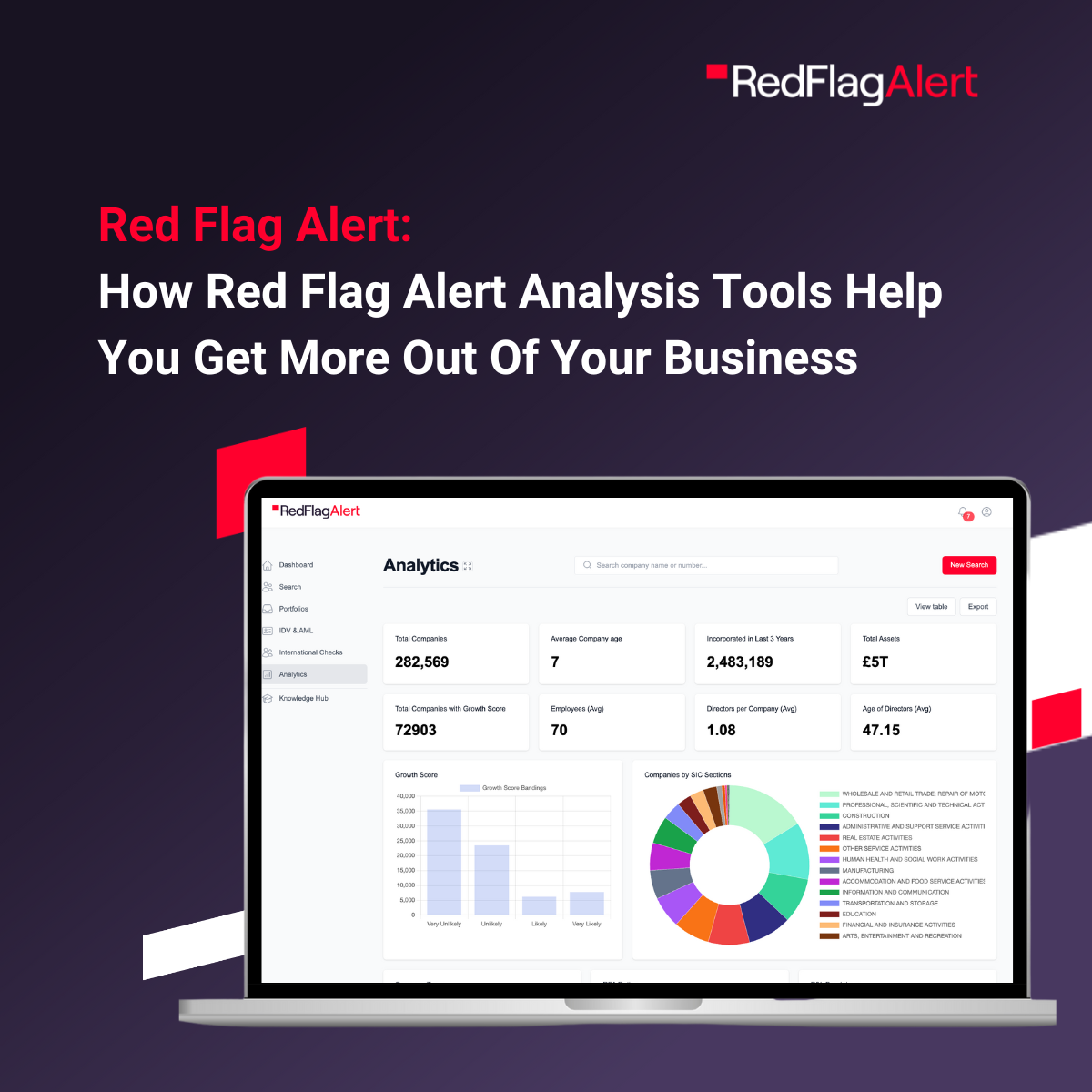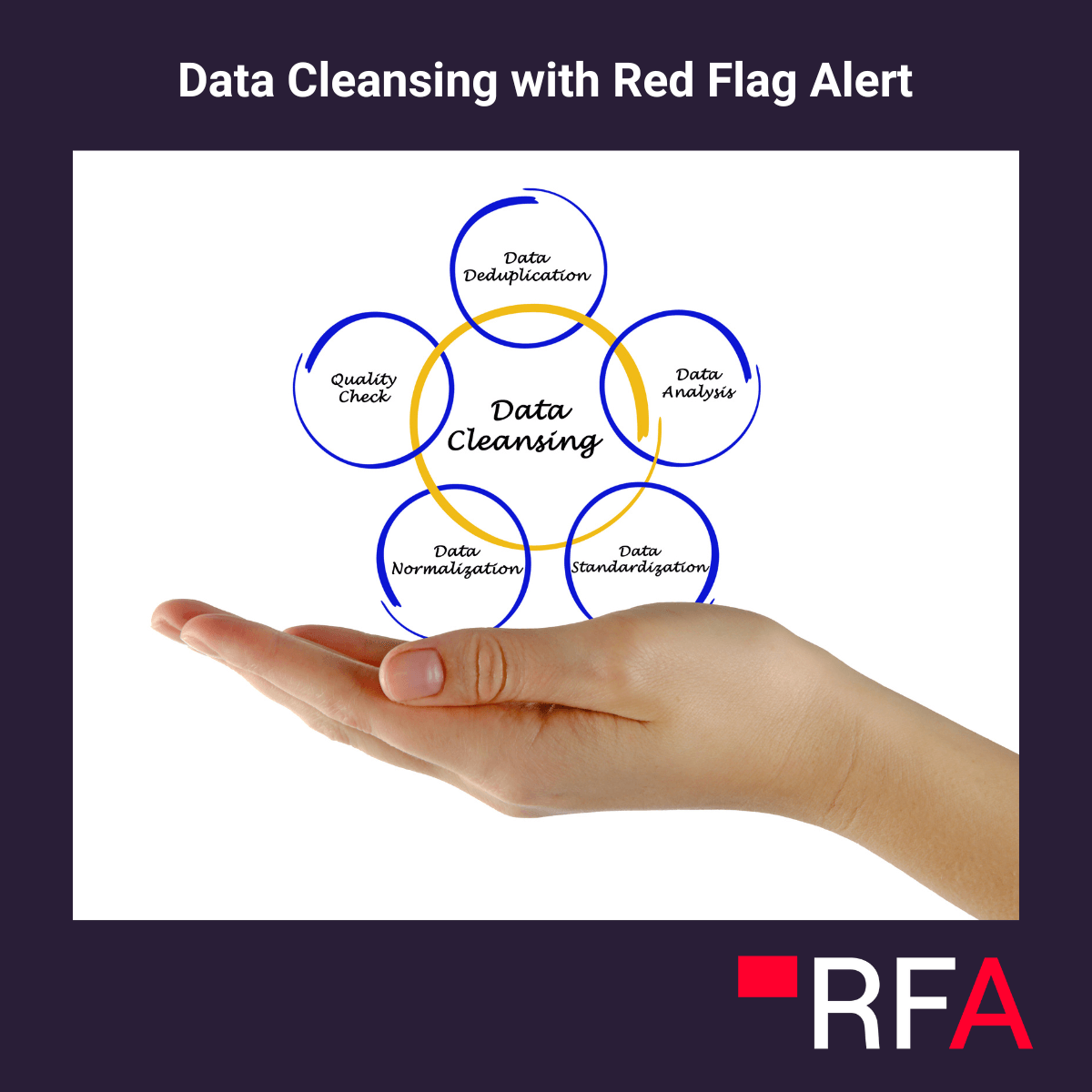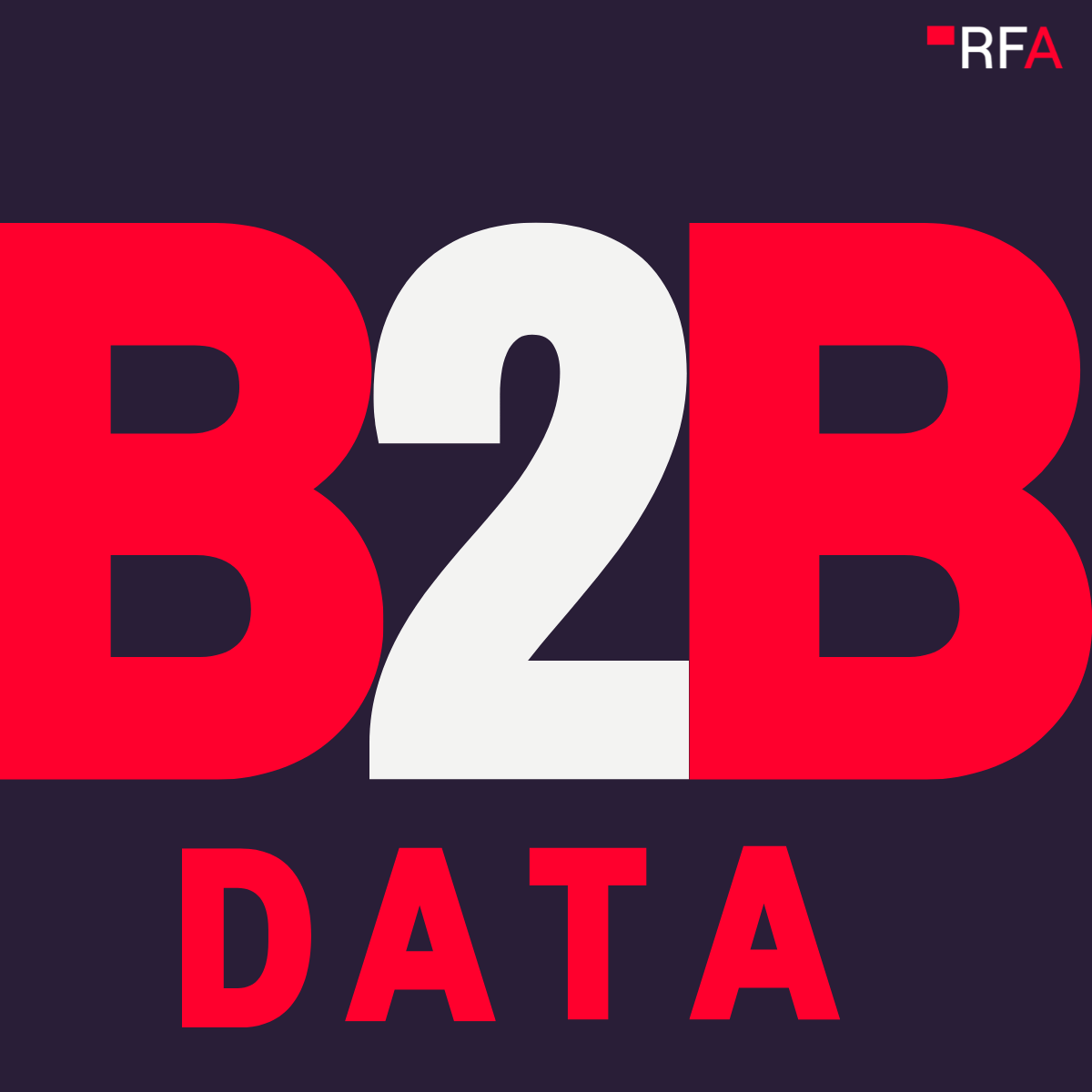A 208% increase in revenue. 171% increase in average contract value. Improved win rates for 86% of marketers.
These might sound like fantasy stats, but they all come from a recent article from Strategic ABM on the growth of Account-Based Marketing (ABM).
ABM is becoming increasingly common amongst B2B companies that deal with high-ticket products or services and have long sales cycles.
94.2% of companies surveyed used ABM tactics, with mature programmes accounting for 79% of sales opportunities.
With so many companies achieving such great results, your business must look at how ABM could work for you. If you don’t, you’ll struggle to keep up with competitors.
This article explains what ABM is, why it works so well, and how you can implement an ABM strategy at your organisation.
- What Is Account-Based Marketing?
- Why Is ABM so Effective?
- How to Execute an ABM Strategy
- The Importance of Data: How Red Flag Alert Helps
What Is Account-Based Marketing?
ABM is a B2B strategy where sales and marketing resources are divided by and focused on the specific needs of individual customer accounts.
There are a few common features of ABM strategies, including:
- Having dedicated teams on each account. This allows sales and marketing reps in that team to better understand the customer’s business and its needs.
- Focusing your efforts on winning and servicing customers that best fit your ideal customer profiles and offer the highest possible ROI.
- Producing sales and marketing collateral, messaging and pitches that have been tailored to the company’s unique requirements.
- A focus on upselling and cross-selling to existing customer accounts.
ABM is best used when selling high-ticket products and services to large accounts with long sales cycles.
It’s also an effective strategy if you have long-term clients who repeatedly buy products and services, where customer service is an essential factor.
Example: Marketing and PR
An excellent example of a sector suited for using ABM strategies is marketing and PR.
Agencies that provide these services charge a premium and often support their clients year-round. Quality and customer satisfaction are significant factors for them.
However, accounts can take years to move from a lead to a fully-fledged client, as many larger businesses will already have agencies in place.
It’s also essential for the agency to prove that they understand the client’s company and its industry before winning its business. That’s why they must have dedicated teams that can learn and retain this information.
The example below shows Chicago-based Sherman Communications and Marketing Inc. Its website has a dedicated page for each of the industries it supports so that prospective clients can see the company’s expertise in their sector.
Counter-Example: Office Stationery Provider
The opposite of account-based marketing is having one sales and marketing team cover all clients and deliver generic messaging and materials. This is suitable for fast-moving, low-ticket industries.
For example, an office stationery provider is unlikely to research a customer and then explain how their products meet their unique needs.
Why? Because the company either needs stationery or it doesn’t. Furthermore, their requirements are unlikely to be complex. Instead, stationery providers are more likely to quickly create generic messages in a bid to hit the right company at the right time. These usually focus on price, quality and speed of delivery.
Repeat buying is likely; however, purchases will be sporadic and won’t need extensive nurturing—an occasional email campaign to keep the provider top-of-mind should suffice.
Align Sales and Marketing
One feature of ABM is close alignment between marketing and sales teams.
This is key, as companies that align these two departments achieve a 32% increase in revenues compared to a 7% decline for those that don’t.
Before an ABM strategy is implemented, marketers focus on creating materials targeted at specific industries, markets or customer segments.
Sales, on the other hand, focus their efforts on those leads most likely to buy.
Once you have an AMB strategy in place, both teams’ efforts are channelled towards individual customer accounts, giving them a common goal.
Marketing now has to produce materials tailored to the account, encouraging them to engage with sales to better understand the needs of individual buyers at the company.
Sales will find that getting more personalised materials will improve their effectiveness and they will be more likely to communicate with marketing.
ABM Strategies Rely on Good Data
ABM involves knowing as much about your target account as possible.
Regularly speaking with contacts at the business and researching the industry are vital parts of this—however, it won’t give you a complete picture.
To truly understand a company’s situation, you need a real-time business database like Red Flag Alert. Such databases can give you information on factors such as its:
- Financial health
- Number of employees
- Value of assets
- CCJs
- Industry
- Location
- Number of local or national competitors
- Corporate structure, including subsidiaries and ultimate beneficial owner
- Company directors’ contact details and other business interests
This information will allow you to spot new business opportunities in prospective and existing clients.
Here are a few examples of how you can use data in ABM:
Spot New Opportunities
When it comes to customer data, every change to each data point represents a seismic opportunity.
For example, if a business suddenly increases its number of employees dramatically, there may be a chance to sell additional HR services.
Perhaps a company suddenly experiences financial difficulties; this may mean that it requires restructuring services.
Another good example is if a company acquires a number of new assets. This might be an opportunity to sell them additional insurance.
The potential opportunities are endless. But how do you find out about these changes?
By setting up monitoring alerts.
For example, with Red Flag Alert, you can set up triggers that send your sales team an email alert every time a prospect or customer’s data changes.
This means they’ll be the first to know when such a change takes place and will be able to present the customer with an offer while the issue is still fresh in their mind.
Create Tailored Messaging
Tailoring your marketing and sales to an account is a crucial part of ABM.
Using data, you can quickly understand the company’s challenges and adjust your messaging in pitches and presentations accordingly.
For example, information about the number of employees allows you to highlight how your products or services can support businesses of that size. Information on their financial position will enable you to set appropriate pricing and payment terms.
Only Work With Good Clients
Data allows you to make decisions on a company’s creditworthiness at the prospecting stage.
This means that you never pursue loss-making accounts.
Furthermore, once your clients are onboard; you can continue to monitor their financial health to ensure that none of your accounts pose a financial risk.
You can also set up triggers to alert you if a customer’s financial position deteriorates below acceptable levels, allowing you to take proactive steps such as calling in invoices or withdrawing credit.
Why Is ABM so Effective?
ABM focuses your resources on best-fit customers with high ROI. This makes it a more efficient approach than other tactics or pursuing unqualified leads.
Let’s have a look at some of the other reasons why ABM works so well.
It’s More Likely to Engage Customers
It’s well - known that personalised email marketing results in higher open rates than generic messages. According to Statista, personalised messages have an open rate of nearly 20%.
However, ABM allows you to go beyond this, sending the content customers want the moment they need it. Sending relevant and high-value content in this way not only ensures that your message is read, it also builds trust with the client and sets you out as an expert in your field.
Prioritising Your Marketing Becomes Easy
We’ve already explained how ABM aligns your sales and marketing teams.
Focusing your internal departments on the same goals in this way reduces internal conflicts and increases efficiency. ABM has been described as ‘zero-waste marketing’ by some sources.
It also makes it easy to decide where to focus your efforts, as you can easily see which accounts are delivering the most revenue, those that have more potential and those which have hit a ceiling.
This internal alignment will have a dramatic impact on your business, helping you to land high-profile clients. This in turn will position you as an industry leader.
You’ll Offer a Superior Customer Experience
With an ABM strategy in place, your customers will begin to feel like royalty.
Think about it. Your teams spend all day trying to find out what customers want and then focus all of their efforts on giving it to them.
This is especially the case when so many other companies out there will be annoying them with generic messages that aren’t relevant to them.
You’ll Increase Your Sales Rate
B2B sales cycles for high-ticket items are often long. That’s because you have to get buy-in from contacts lower down in an organisation’s chain of command to reach or influence a key decision-maker.
With ABM, you’ll achieve this quicker, as all your resources are focused on reaching a decision-maker and building a relationship with them.
ABM also ensures that you continue to deliver value to that individual beyond the initial sale by providing decision-makers with a constant stream of useful content. This makes add-on and repeat sales much quicker and easier.
Measuring ROI Becomes Easier than Ever
ABM allows you to set objectives and budgets for each target account. This enables you to regularly monitor each account and track progress towards your goals.
Costs and revenue aren’t the only things to measure though. You can also evaluate equally important abstract factors, such as new relationships you have nurtured on the account or any growth in reputation that you may have experienced. The latter could be achieved through qualitative means such as customer feedback surveys.
How to Execute an ABM Strategy
In this section, we explain step - by - step how to implement an ABM strategy at your organisation.
Use Data to Identify and Prioritise Accounts
Step one is to identify your sweet spot—the customer segments that you are best at serving and are most in need of your products.
Begin by looking at your existing customers. Which ones regularly bring in the most revenue? Which ones cost the least to service?
Use this information to build an ideal customer profile. You’ll need to include information such as:
- Industry/sector
- Size of organisation
- Revenue
- Location
- Financial position
- Value of assets
The factors you use don’t all need to be positive. For example, if you sell administration or restructuring services, you may want to look for companies with deteriorating financial positions. Or if you are an accountant, you may wish to target businesses that struggle to file their accounts on time.
Now that you’ve built a picture of your ideal customer, it’s time to find those customers.
Databases like Red Flag Alert allow you to filter the companies on their database. You can set these filters to the characteristics outlined in your ideal customer profile, allowing you to identify every business in the UK that fits your criteria. You can use this information to build targeted sales lists, allowing your team to only focus on the best leads.
Sales lists like this are powerful tools in their own right, but imagine if you could find out immediately when new businesses enter your target market? Or if you knew as soon as companies became big enough to qualify for your services?
Business databases like Red Flag Alert are updated in real-time and allow you to set up triggers that alert you when new prospects come online. This means that your sales team will have a constant flow of leads for best-fit prospects.
Identify How Your Target Accounts Are Structured
Now it’s time to build an understanding of the people and businesses that you intend to approach.
According to Gartner, a typical buying group for a complex B2B solution can involve up to ten decision makers.
It’s therefore essential to work out who the key decision-makers are and how buying decisions are made.
LinkedIn can be a valuable tool for this. You can bring up a list of everyone who works for a company and then identify which job titles look like potential key decision-makers.
Do this by visiting the company’s page and clicking the link that shows the number of employees.
The kind of job title you approach depends on what services you provide, the size of the decision-maker’s company you target and the industry they work in.
However, you should broadly aim for people at director or VP level at enterprise businesses. At smaller companies, you may need to target the managing director or CEO.
Once you know the people you are targeting, you’ll need to try and get a conversation with them to find out about their buying process.
The most direct route is to ring them. However, this can be difficult, as busy people rarely welcome unsolicited calls.
A better approach is to try and meet the person face - to - face. Our favourite tactic is to attend a trade show that you know they will be exhibiting at and visit their stand. You can speak to them on the stand, or if this isn’t convenient, you can arrange to take them for a coffee at the end of the day.
The purpose of this conversation isn’t to make a sale, it’s to build a relationship. You should ask lots of questions about their business and get to know them personally. Any information you learn should be added to your CRM so the whole team can see it.
Determine Optimal Channels for Reaching Decision-Makers
Once you know who your decision-makers are and you’ve learned a little more about them, it’s time to start your ABM strategy.
Begin by reviewing what you’ve learned and thinking about the kind of content that will be useful and that you can produce to a high quality.
Next, identify the channels that the company uses the most and produce materials that work here.
For example, if your target company is active on LinkedIn, you should publish articles there and alert decision-makers whenever you post something new.
You can also create short videos providing helpful content. For example, this video posted by telecommunications provider Ericsson provides valuable information on 5G technology trends in the Indian market.
This is an excellent way for the company to highlight its expertise to businesses thinking of upgrading their systems to be 5G compatible.
Develop Tailored Content to Address Pain Points
Your content has to be relevant to the challenges that individuals at your target account face.
Otherwise, they simply won’t be interested in reading it—even if it is published on the channels they use.
First, look at the qualitative information you’ve gathered.
Go back to the conversations that you had in section two. What did your contacts tell you about the challenges of the business?
Next, you’ll need quantitative data—refer back to the data section of this guide. Use company data to spot underlying challenges. Is the company struggling financially? Have any data points dramatically changed in the last three months? Is the company investing heavily in certain products or services?
Finally, use this knowledge to plan your ABM campaign. Think about the following points:
- How can your services help overcome the target account’s challenges?
- What content can you provide that will be useful for them?
- What is the buyer journey for this account?
- What is the call to action in your content?
Execute ABM Campaigns
It’s essential to plan your campaign. Take time to consider how often you send new content to your contacts and how you will follow up on it.
You need to strike a careful balance, remaining professionally persistent without annoying or overwhelming the decision-maker.
You can use triggers to alert you to changes in the target company’s data at this stage. This may present an opportunity to send them useful content.
For example, if you provide accounting services and your target account is hit with a CCJ, now could be an excellent time to publish content about managing invoice payments.
It may also be useful to use specialist software to manage your campaign.
To learn how Red Flag Alert’s B2B prospector tool can help your business grow, get started with a free trial.




